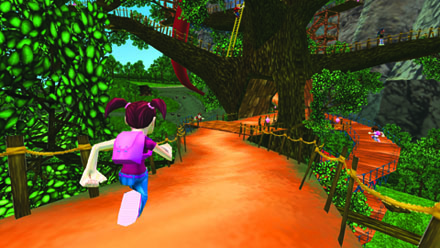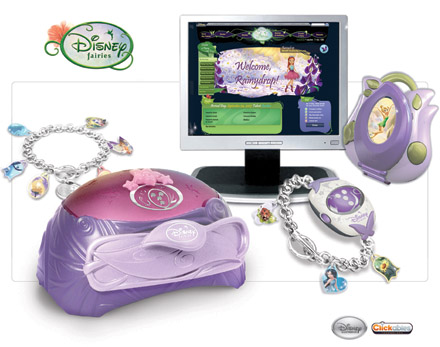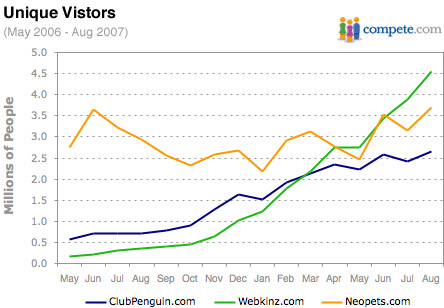Every year about this time in a beautiful and artistic section of Lambertville, New Jersey, I attend a unique technology conference called Dust or Magic. This inspiring and often eclectic event brings together experts from the fields of research, education, software, toys, and gaming with one common goal in mind- to share ideas and experiences towards the successful design of interactive products for children. This year’s keynote speaker that kicked off the three day event was Lane Merrifield who, until recently, was the CEO and Founder of the successful children’s social networking website Club Penguin. With the recent acquisition of Club Penguin by Disney, Lane moves into his new role as the EVP of the Walt Disney Internet Group, the interactive arm of Disney responsible for children’s online content.
After Lane delivered his presentation to a packed room, I had the opportunity to ask him about his experiences in creating and developing the Club Penguin service.
Scott Traylor: When you were a teen you lived in southern California and worked for Disney. What do you remember about working at Disney?
Lane Merrifield: What I remember most is being in the park and being with the entertainment in the park. It really was a premiere experience. I had great managers and I really felt privileged to have started in Disneyland. A lot of our customer service is modeled after the park. We are very liberal with customer requests. The same way if you spill your drink in a theme park and you go up to someone with your empty cup, whether you drank it or spilled it, the concession stand will give you a brand new cup and fill it back up. They’re going to give you the benefit of the doubt, and this kind of premium service left a strong impression on me. It’s good business to have that level of quality, and seeing it play out from behind the scenes as an employee of Disney; seeing that it was genuine, that it was more than just a show was a pretty fascinating experience.
ST: How did your experience of working at Disney shape how you built Club Penguin?
LM: Those experiences have shaped Club Penguin throughout, from the way we built our world to be an imaginary exclusive place, free from outside influence, to the level of customer service which was modeled exactly after Disney. In fact, a lot of Disney executives who come through our offices and hear our story comment on how much of our thinking is already in step with Disney. We’re told we already “get it” and we know what Disney is looking for.
ST: What other influences have helped shape Club Penguin?
LM: Really bad customer service from tech companies. It’s so frustrating navigating through a maze of phone calls and emails, and crossing your fingers that you’ll get a reply, even if it’s an automated one. It’s one area we keep very close tabs on. If a parent or a child writes to us, it’s our goal to get back to them the same day. Customer service is an area that has me knocking my head against the wall. How is it that so many good service companies have it figured out? I can go into a Starbucks and get great customer service. I can go into Disneyland and get great customer service. Why is it that the technology sector is so bad at this? I know that customer service is labor intensive and expensive. For us, if we can build a scalable model that includes good customer service, it’s worth it. Club Penguin was our own baby. It was our own thing. We had to make the customer service part of our business work. Disney has not even thought twice about whether we should shave cost in this area, not at all. They’ve said “You guys keep doing what you’re doing and keep it working.” Steve Wadsworth, the President of the Disney Internet Group, has been very good in noting how we’ve done this differently. I think Disney has done a good job compared to most other companies, and with its help we’re learning how we can do it even better.
ST: That;s quite a responsibility.
LM: It’s heavy for sure. It’s what keeps me up at night.
ST: What have you come to learn about children through Club Penguin?
LM: This is going to sound cliché, but among the lessons I’ve learned is that we tend to underestimate kids and their creative potential. There’s so much role playing involved in Club Penguin. There’s so much imagination at play. For the Halloween party in Club Penguin, for example, we developed a movie theater that played “Night of the Living Sled.” It was all about an electrical storm that lights up this sled that then goes chasing after penguins. It was just a 10-second Flash short because we were playing around with shorts at the time. Around the movie theater we purposely put in a concession stand, a popcorn machine; all sorts of stuff, totally unmanned, with no agenda. We just let the kids use it and role play with it. It’s no different than when I was a kid and had a toy cooking set or a toy tool set, and I would pretend to fix everything. That’s the kind of play we try and build into Club Penguin but you have to look beneath the surface to see it.
ST: What has surprised you about your audience?
LM: A lot. One big thing that has surprised me is how forgiving our audience is when there’s a brief period of down time or a technical glitch. The more honest we are with our users, the more forgiving and patient they are with us, and it’s been a great reciprocal relationship. We also don’t take advantage of that good will and think we have more time to fix the problem. Part of that reciprocal relationship is knowing our users trust us and that makes us try even harder.
ST: Do you see differences in how Club Penguin members from different parts of the world use Club Penguin?
LM: Yes. Obviously if there are language barriers, there are certain elements of the game that these users are not participating in. It’s something we’re trying to learn a lot about right now, especially as we’re looking to dive into some of these markets. Because we don’t ask our users what country they’re from it’s hard to get a fine degree of detail on non-English users. People are always asking us about our metrics, but because we have such a strict privacy policy, there’s a lot that we can’t track.
ST: Speaking of metrics, are there things about your web metrics which appear in the press that drive you crazy?
LM: To be honest we’re quite indifferent to it all. I don’t like it when reports are so off the mark, but because we’re not playing the same game that many other sites play for advertising reasons, we’re just as well to let them report whatever they want to report.
ST: Good point. Because Club Penguin is not ad driven, it doesn’t really impact your business in the same way as it would other online services.
LM: Exactly. I would just as soon not play the numbers game. We don’t need to play the numbers game. Even in our office, we don’t talk numbers. We don’t want the focus to be on bumping this number up or bringing this number down.
ST: If you were to do so, you’d be driving for the wrong measurement.
LM: Totally. It’s about how can we make the site more fun. How can we make it more safe. There’s an expression we often use around the office, “If it doesn’t matter to an eight year old, it doesn’t matter.” That helps us simplify a lot.
ST: Tell me about the Puffle. 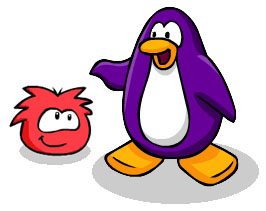
LM: We wanted penguins to have a pet and we wanted kids to have something to take care of within the Club Penguin world. We wanted this pet to be an imaginary creature with unique characteristics and personalities. We also wanted it to be simple enough for a kid to draw.
When Puffles were first “discovered” in the Club Penguin world, they were an unknown thing. We had the Club Penguin scientists who captured a few to study them to see if they were safe. There was a whole storyline, about an eight or nine week arc, that ended in a need to name these creatures. So we pooled together the kids’ top five suggestions. We actually had about a thousand or so kids recommend the name “Puffle”, so they all got coins for choosing the winning name, and we had a big announcement. The original Puffle drawing came from our first employee we brought on as our lead animator, and he’s still our lead animator today.
ST: Did you notice a difference in Club Penguin after the introduction of the Puffle?
LM: Not really. The idea of a Puffle had always been in our design documents and we always planned on having it there, so there wasn’t really a marked change. To us it just opened up another method of play
ST: As an outsider and a developer of children’s technology, I look at the Puffle and it’s clear to me that it has a charm and uniqueness all its own, in addition to and separate from penguins. Because of this, I’ve wondered if the Puffle acts as a driver to extend the play experience in ways that might not appear without it.
LM: We haven’t measured that sort of thing. We do receive a lot of feedback from kids. Some kids say they love their Puffles but don’t want to keep feeding them anymore. So they decide to let them go and be free, and that’s okay. If a user decides they don’t want to feed their Puffle anymore, the Puffle never dies. It just runs away. It’s a decision that’s totally up to the child. It’s just another way of letting the user decide how they wish to play.
ST: If you had the opportunity to go back in time and change one thing about Club Penguin, what would it be?
LM: We would have built out more of the site;s infrastructure earlier on. I’m not sure we could have done this because it would have brought up our costs. We really had to watch our costs and pinch our pennies. We still do. We pride ourselves on being fairly good at that. Looking back, I think product development was slow because so many of our resources went into managing the volume of traffic we received. We just didn’t think we would receive that much traffic. We never thought our service would be this big, and not only did we believe this, we bet on it by not building out the infrastructure. When I think about it, I feel bad that our guys couldn’t focus on new features and new elements and new ways of playing. Our timetable for when we would get to these things was stretched out a lot longer than when we had planned. Even now we’re just finishing off the next iteration of our infrastructure. We’re actually building a brand new back end – a brand new engine – and it’s almost complete. We;re overbuilding it so we can just be done with it all and move forward and just dream about what we want to do next.
ST: When you were building Club Penguin, was there anything that you used to do that you don’t do now?
LM: Not much. My focus is so much on our core, our values, and our philosophy. That stuff hasn’t changed a whole lot.
ST: What do you think about claims in the press that Club Penguin was an overnight success?
LM: If it doesn’t matter to an eight year old, it doesn’t matter. I think the media is sometimes too focused on ego and on making celebrities. I understand all that. I get it. I just don’t spend much time thinking about it. We love to focus on the creative and focus on what we do and how people respond to what we make. As for the media, what it says is really its prerogative, and if some people say we’re an overnight success, well that’s okay. If others understand the longer effort that went into it, that’s okay too. I would rather focus my time on creating new ways of play and making the Club Penguin world deeper, richer, more fun and more safe rather than spending my time correcting stories in the press. Since day one our focus has been on service and our job is to serve the kids. For example, my job as a dad is to serve my kids in every way I can. Providing for them, nurturing them, loving them and taking care of them. That’s my role as a dad. It’s not about winning the Hero Dad of the Year award or anything like that. Club Penguin in a way is a similar opportunity to serve. And focusing on whether someone calls you a “One Hit Wonder” or an overnight success is just not worth the time. Hey, I hope someday we create something that will surpass Club Penguin, but if we don’t, that’s okay because I know Club Penguin served its purpose in my kids’ life and a lot of other kids lives. If that’s all I do, then I did what I set out to do and I can’t be disappointed in that.
ST: Lane, thank you for your time. I wish you and your colleagues back in Kelowna all the best and many future successes.
LM: Thanks Scott. I wish you and your team the best as well in making great things for kids.
For the history of Club Penguin visit the blog post “Just the Facts Ma’am – The History of Club Penguin”
For an overview of children’s social networking destinations, visit “A Survey of Kids’ Social Networking Sites”
Average Rating: 4.8 out of 5 based on 291 user reviews.

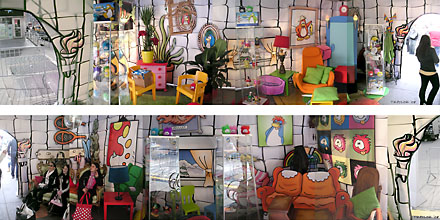
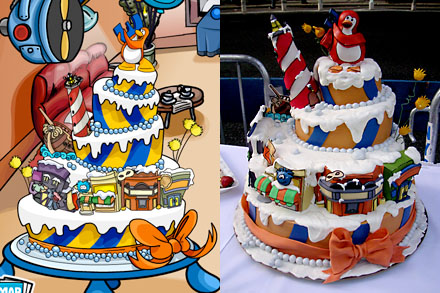


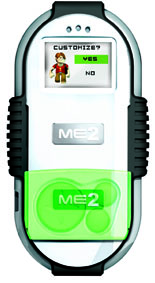 Every year when I attend the New York Toy Fair I may see a few thousand toys in the course of four days. I was recently speaking with another toy reviewer who said, “Did you ever notice that even though you see thousands of new toys, you will only remember maybe five of the best products?” This observation has served me well. What stands out in a Toy Fair attendee’s memory after seeing so many products will usually go on to be the breakthrough later in the year. I believe the ME2 by
Every year when I attend the New York Toy Fair I may see a few thousand toys in the course of four days. I was recently speaking with another toy reviewer who said, “Did you ever notice that even though you see thousands of new toys, you will only remember maybe five of the best products?” This observation has served me well. What stands out in a Toy Fair attendee’s memory after seeing so many products will usually go on to be the breakthrough later in the year. I believe the ME2 by 